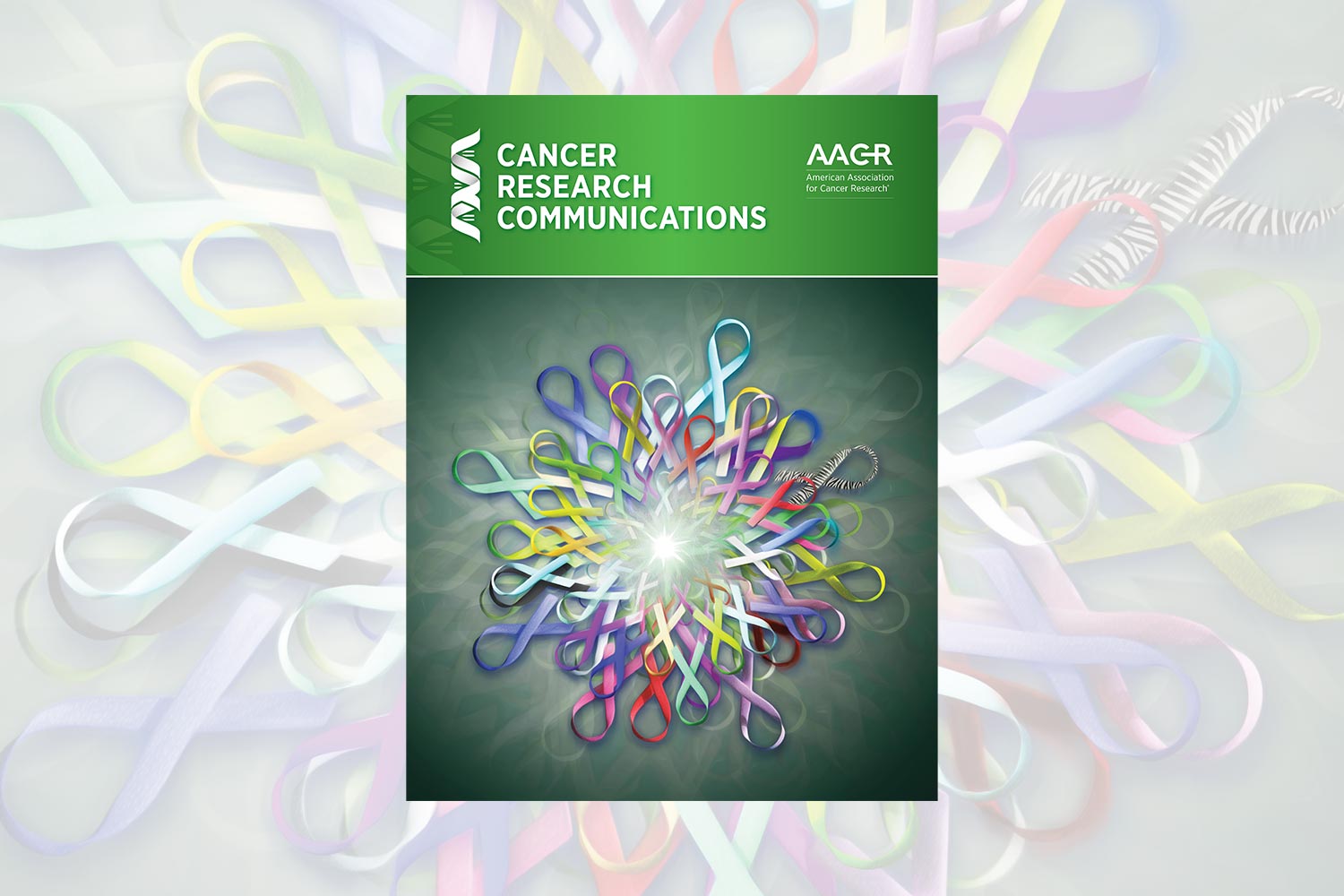
AACR Launches Cancer Research Communications
Cancer is complex and multifaceted. Research in the past two decades has made clear that each tumor and every patient’s immune system is unique, and that the cancer journey is affected by tumor biology, the patient’s body, and the surrounding environment. While remarkable progress has been made in the field—in the understanding of the biology of cancer and in developing new and effective therapies—basic principles and details of cancer biology still await discovery.
Recognizing these complexities, the puzzles of cancer biology, and questions of how best to approach treatment, the cancer field has become increasingly multidisciplinary. Clinicians, molecular biologists, statisticians, chemical engineers, computational biologists, chemists, cell biologists, nanotechnology experts, and physicists are working to answer the many challenging questions that surround cancer.
To help capture the evolving multiplicity of innovative approaches being applied to the study of cancer, the AACR launched a new journal, Cancer Research Communications, in October 2021. Open access is a publishing model in which research articles are rigorously peer-reviewed but are freely available online for anyone to view. Cancer Research Communications is the first open-access journal from the AACR. The new publication captures basic science as well as translational and clinical cancer research.

“Cancer Research Communications is exemplary of the broad interests of the AACR’s members. We are very excited to showcase the many different interests of the AACR community and the cancer research community as a whole,” said Elaine R. Mardis, PhD, one of two editors-in-chief of the journal and the co-executive director of the Institute for Genomic Medicine at Nationwide Children’s Hospital in Columbus, Ohio.
According to Dr. Mardis and Lillian L. Siu, MD, also an editor-in-chief, the journal seeks to publish a wide range of papers: hypothesis-generating work that lays the groundwork for additional in-depth research, thorough observational studies, research that provides substantial evidence to confirm or refute previously published studies, and papers that disclose thought-provoking results, even if those results are negative. Cancer Research Communications welcomes manuscripts that detail early-stage therapeutic development in which the mechanism of action has not yet been worked out but that appears to have an effect in a cancer animal model. Early- and late-phase clinical trials with novel findings are also of interest for the journal.

“We are seeking cancer research from different disciplines, and especially out-of-the-box studies that may not be a good fit for traditional cancer journals,” said Dr. Siu, who is a professor of medicine at the University of Toronto.
According to Lucas Brand, PhD, the internal scientific editor of Cancer Research Communications, the journal will publish impactful, rigorous, and high-quality scientific studies. “We have brought together a team of editors from a wide range of disciplines and with a core of high-rigor editorial standards,” said Dr. Brand. “The editors will decide which studies are ready for prime time and others that may need more work prior to being considered for publication.”
Each senior editor will lead one of the nine table of contents sections of the new journal:
- Molecular and cellular biology,
- Tumor biology,
- Immuno-oncology,
- Emerging technologies and data science,
- Therapeutic research and development,
- Precision medicine and biomarkers,
- Clinical research and trials,
- Epidemiology and prevention, and
- Health disparities and outcomes research.
Other associate editors, each of whom is a specialist in one of the nine research areas, will provide additional expertise.
“Unique areas of our journal are the health equity research as well as interventions and factors that contribute to survivorship, including exercise and metabolism, which haven’t fully entered the mainstream but are deservingly getting increased attention,” Dr. Mardis said.
A strength of Cancer Research Communications, Dr. Mardis pointed out, is that a researcher who reads journal papers in their field of interest will find related articles approaching the same cancer question using other approaches and perspectives, from computational research to epidemiology. These cross-cutting themes are a result of the wide net cast by Cancer Research Communications, a broad perspective that’s not common in other cancer journals. Exploring new disciplines in cancer research can lead to new thinking about approaches to a scientific question or sometimes to unexpected collaborations based on a joint interest, Dr. Mardis said.
Quick Reviews and Open Access
Cancer Research Communications will publish original research papers. The journal will also have a monthly editors’ corner letter from Dr. Siu and Dr. Mardis in which the editors-in-chief discuss specific papers, underscore themes, and offer perspectives on current trends in cancer.
Papers will be published online only on a rolling basis, with all papers published in a given month comprising the monthly issue. According to Dr. Brand, the journal seeks a wide representation of research from all around the world and has brought in editors from other countries.
A unique attribute of Cancer Research Communications will be the speed with which papers are reviewed, accepted, and published. The submission, review, and publication process can take up to a full year for some print journals. Cancer Research Communications is prioritizing expeditious handling of manuscripts by its editors and streamlining the peer-review process so that feedback is rapid and precise concerning which concerns are crucial to address for publication. “We are developing a rigorous and efficient editorial process to get novel results to the public relatively quickly,” said Dr. Siu.
Dr. Brand agreed. “We can move quickly to publication once the manuscript has been accepted. We believe that this serves the interest of the authors as well as our readership,” he said.
“We are leveraging the reputation of the AACR—the first and largest professional organization in the world dedicated to advancing cancer research—and our commitment to communicating high-quality research to the community,” Dr. Brand said. “Many authors want to publish their work in AACR’s journals, which is reflected in the number of submissions we receive—far more than we can currently publish.
“With Cancer Research Communications, we are offering that access to more researchers and readers. This journal will have the broadest scope of any journal we have ever published,” he added.
That Cancer Research Communications provides open-access papers is critical to the journal’s identity within the AACR family of peer-reviewed journals.
The open-access journal model is attractive for researchers who receive funding through initiatives that require scientists to publish their research in journals that are free and accessible.
“As the co-editor-in-chief, I am very excited that Cancer Research Communications is the AACR’s first open-access journal,” said Dr. Siu. “We envision that accepted manuscripts will be published and made accessible expeditiously to the scientific community. This is important not only for the researchers and investigators performing the study to get their data out quickly, but also for others who want to validate or build on such findings.”
Said Dr. Mardis, “We are very excited to launch Cancer Research Communications. It is a bit of a bold experiment. We have high hopes that it will be great!”
Introduction to Cancer Research Communications from AACR on Vimeo.


